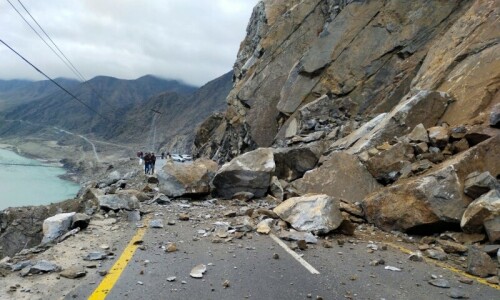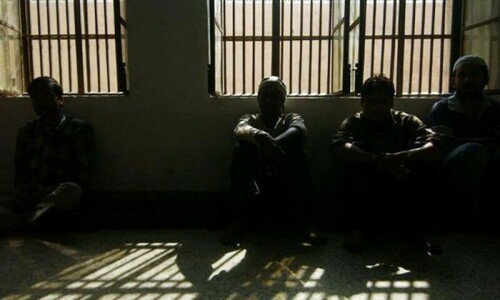
Almost two years after the Gawalmandi food street fiasco, the Fort Road food street is all set to launch after the 10th of Muharram.
Located behind the Badshahi mosque, set amidst the Taxali and Roshnai Gates, the SikhGurdwara and numerous other historical buildings in the Walled City, the Fort Road food street is one of the 9 planned food streets to be constructed in various parts of Lahore in the near future.
More than two dozen buildings in a V-shaped street have been 'dressed-up' for the purpose and gates have been erected at the entry and exit points of the street. It has been communicated that the Punjab government and the City District Government Lahore have not contributed financially to the development of the street as the project is a private venture; however, it has facilitated and arranged for the loan requested. What seems evident is that the people most likely to benefit from the street are those close to the ruling party, multi-nationals, business tycoons from other parts of the city and various 'VIPs' in the Punjab.
In vain, the Walled City of Lahore has for years been begging for restoration and rehabilitation. The slowly crumbling historical buildings and decaying streets with poor living conditions have so far not received any major aid and no radical step has been taken to ensure what is left of the historic fabric.
Instead though not surprisingly, what grabs more attention and is welcomed with great zest is the construction of a commercial strip set within a fundamentally residential area. Instead of restoring the countless historic buildings in the Walled City including those on the Fort Road, what has been implemented, not only means compromising the integrity of two dozen historical buildings, but also the fact that the nature of their treatment currently makes them look like replicas of themselves. The encroachments and building frames that need revision remain untouched while street lights installed appear to be Italian inspired and have no relation to the historic context of the area. The pre-partition buildings that are to house the restaurants are painted in bright colors like pink, yellow and green. Once again, although these colors may appeal to people, they do not express any of the Walled City’s characteristics.

Wooden balconies known as 'jharokas' and carved wooden doors are accordingly pasted and arranged onto the fenestration of the building in a pitiable attempt to reflect the persona of the ‘Old City’.
On visiting the Fort Road food street, one would expect to be introduced to the true culture and experience of the Walled City - the project, however, rarely brings forth that opportunity and instead presents a ‘disneyfied’ version of itself to the public. The words, conservation, restoration and protection are widely misunderstood in most of Pakistan. What has been implemented on the Fort Road is merely a superficial facelift and a complete disregard for its historic context and cultural value.
The idea and implementation of the Fort Road food street makes it obvious that nothing has been learnt from the Gawalmandi incident. Once again the food street, a commercial zone, interrupts and disturbs an essential residential area that lies in a congested part of old Lahore. A great part of the private lives of the residents are bound to be affected by the commercialisation of the street, driving them out of their personal comfort and comparatively peaceful way of life. The traffic flow in the area does not allow for such heavy commercialisation. Increased pollution and traffic problems will eventually speed up the breakdown of the already decaying historic monuments and urban fabric of the Walled City.

Waste generated from the food stalls will slowly begin to take its toll on nearby settlements unless proper facilities are ensured for the purpose, which given the location of the Fort Road food street, is hard if not impossible to achieve.
Instead of restoring the historic homes in the Walled City, tackling real issues faced by the residents on a day to day basis, providing solutions and livable conditions, 25 homes have been merely ‘dressed up’.
The structures have not been restored/strengthened internally and the external treatment along with its commercialisation has further raised concerns. As if it were not enough, lights and music systems have been drilled into the skin of these structures further damaging their already fragile condition.
Once the food street is active, it is only a matter of time till we lose yet another handful of historic structures and with them a great part of what forms our culture and identity.

The views expressed by this blogger and in the following reader comments do not necessarily reflect the views and policies of the Dawn Media Group.










































